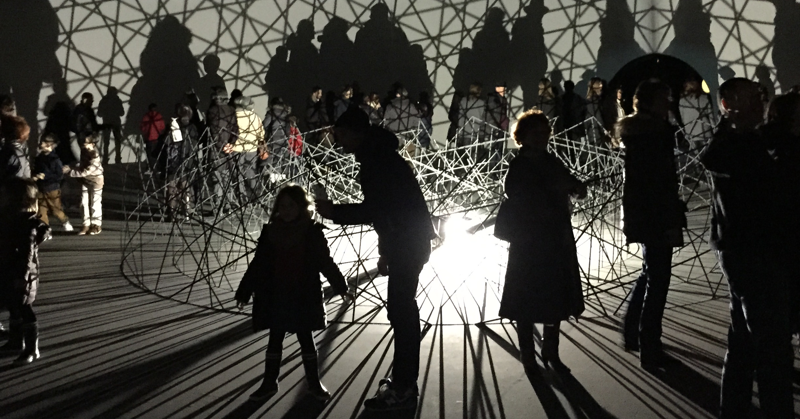A quick observation.
A while back I remember talking to someone about how, one day, promoters might start taking into account things like Twitter followers into account when booking bands and DJs. it wasn’t a huge leap to make – MySpace must’ve been getting close to it’s peak and the media were talking up how large online fanbases had propelled Lily Allen, Arctic Monkeys and others to success.
Fast forward a bit and we’ve got YouTubers all over the bestseller lists, radio and on tour, a Vine star with a (cancelled) TV show, and a Twitter comedian with a C4 TV show. There’s presumably plenty of Facebook and Instagram stars out there that I’m missing.
Anyway. Point is that being able to attract an audience has always been a good thing.
A tale of two exhibitions
I went to Paris last weekend (it was lovely, thanks) and while I was there I went to a couple of exhibitions. One was Lumières : carte blanche à Christian Lacroix at the Musee Cognacq-Jay, the other was Olafur Eliasson – Contact at the Fondation Louis Vuitton. They felt like very different beasts.
The Musee Cognacq-Jay exhibition was interesting enough. The museum houses a collection of 17th-century objects and has recently re-opened after renovation, with a little stardust applied by guest curator, Christian Lacroix. That’s a name that’ll make ears perk up and will garner some extra attention. While you’re at the exhibition you wander about quietly, maybe download the rather duff app and generally have a nice enough time of it.
On the other hand, the Olafur Eliasson exhibition at the FLV was extraordinary, and very popular too. Sure, the guy’s got an excellent reputation, but how many people would recognise the name (he did the big sun in the Tate’s turbine hall).
I didn’t see anything saying you could or couldn’t take photos (there was maybe a mention of the #EliassonFLV hashtag somewhere), but the immersive light installations – all striking patterns and mirrors – made it practically impossible to take a bad photo or an uninteresting selfie. That meant a lot of people taking photos and videos of themselves, each other and the exhibition (probably in that order of importance).
The result of that is a lot of stuff being shared across Facebook, Instagram and Twitter, resulting in a tonne of digital word of mouth. You can see a snapshot of this activity at http://olafureliasson.net/eliassonflv/.
Formats
I’ve been doing a lot of pondering recently around the question of formats that fit with patterns of digital dissemination (more to come on this). Olafur Eliasson’s exhibition does a great job of making itself shareable by creating an experience that involves visitors (and wouldn’t work nearly so well without their participation) and letting them do their thing.
There’s no digital aspect of this exhibition that’s been tacked on as an afterthought (hashtag aside). Instead, the aspects that appeal to social media-using visitors are an intrinsic part of the art and experience. Is that by luck or design? Who knows.
Of course, not every exhibition needs to be immersive, interactive and participative (at least, I don’t think so…). But it did make me wonder whether artists, curators, artistic programmers, exhibition designers and the like are going to start taking this sort of thing into account when designing and selecting what will go on show. If they’re not already.
